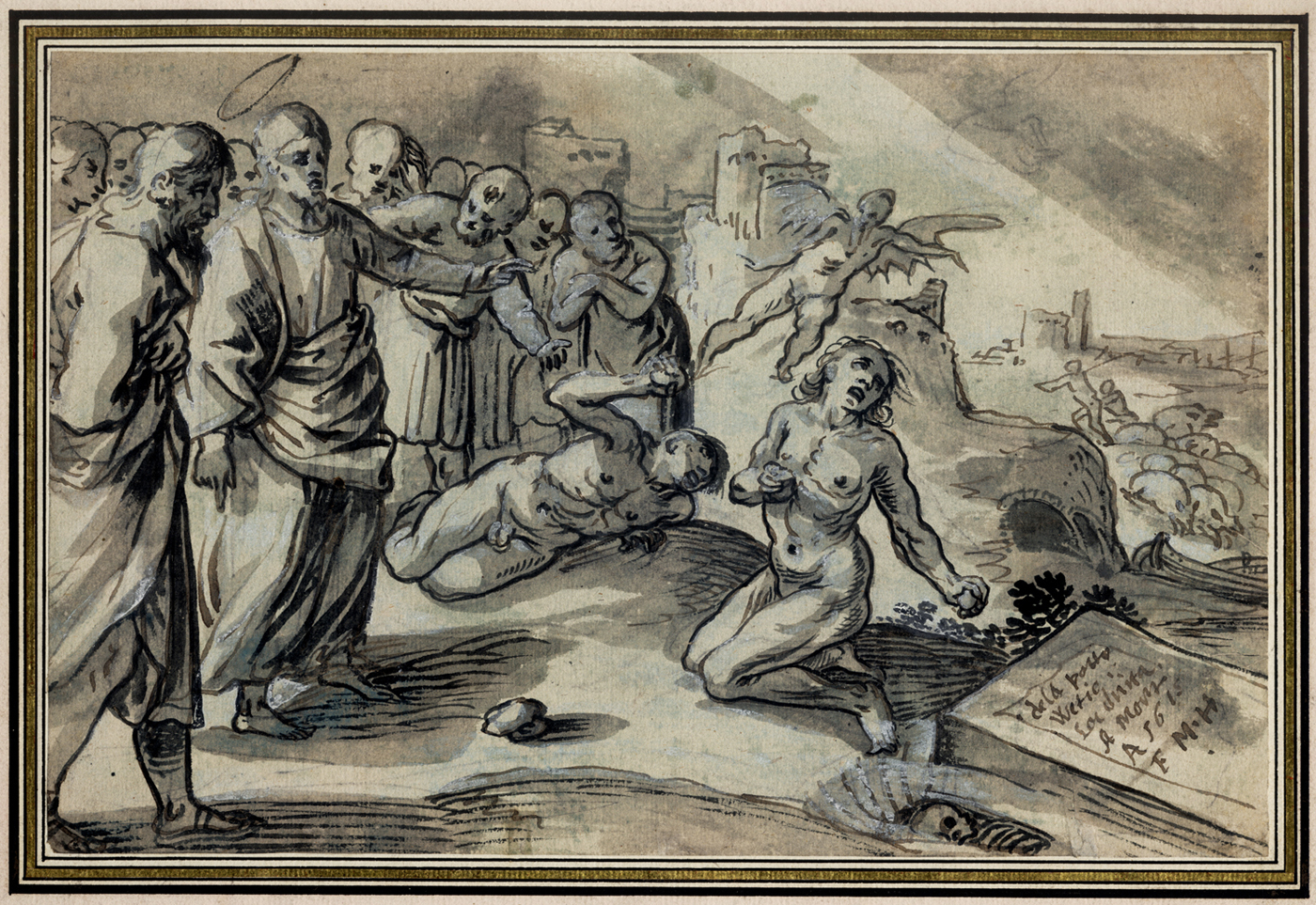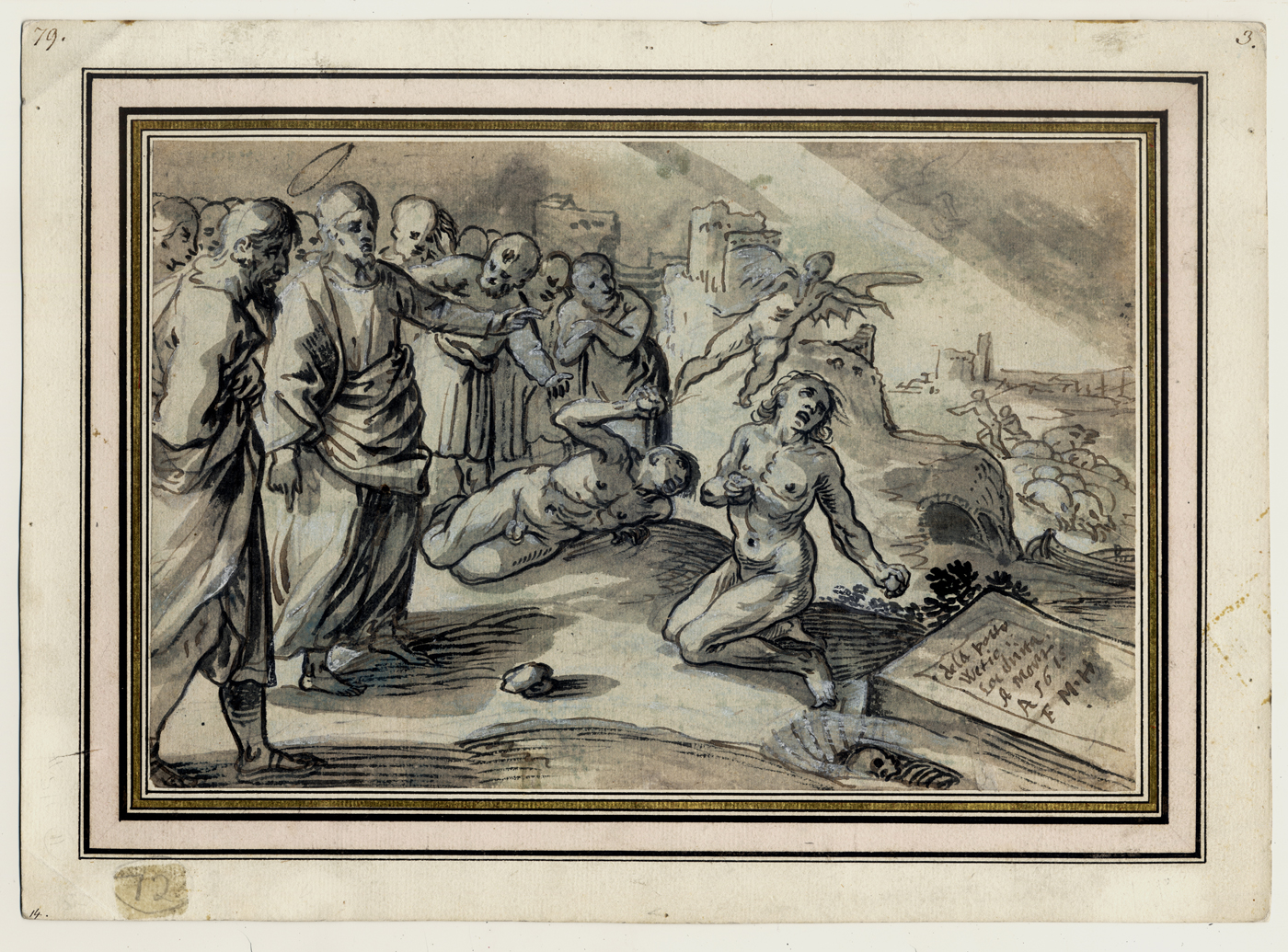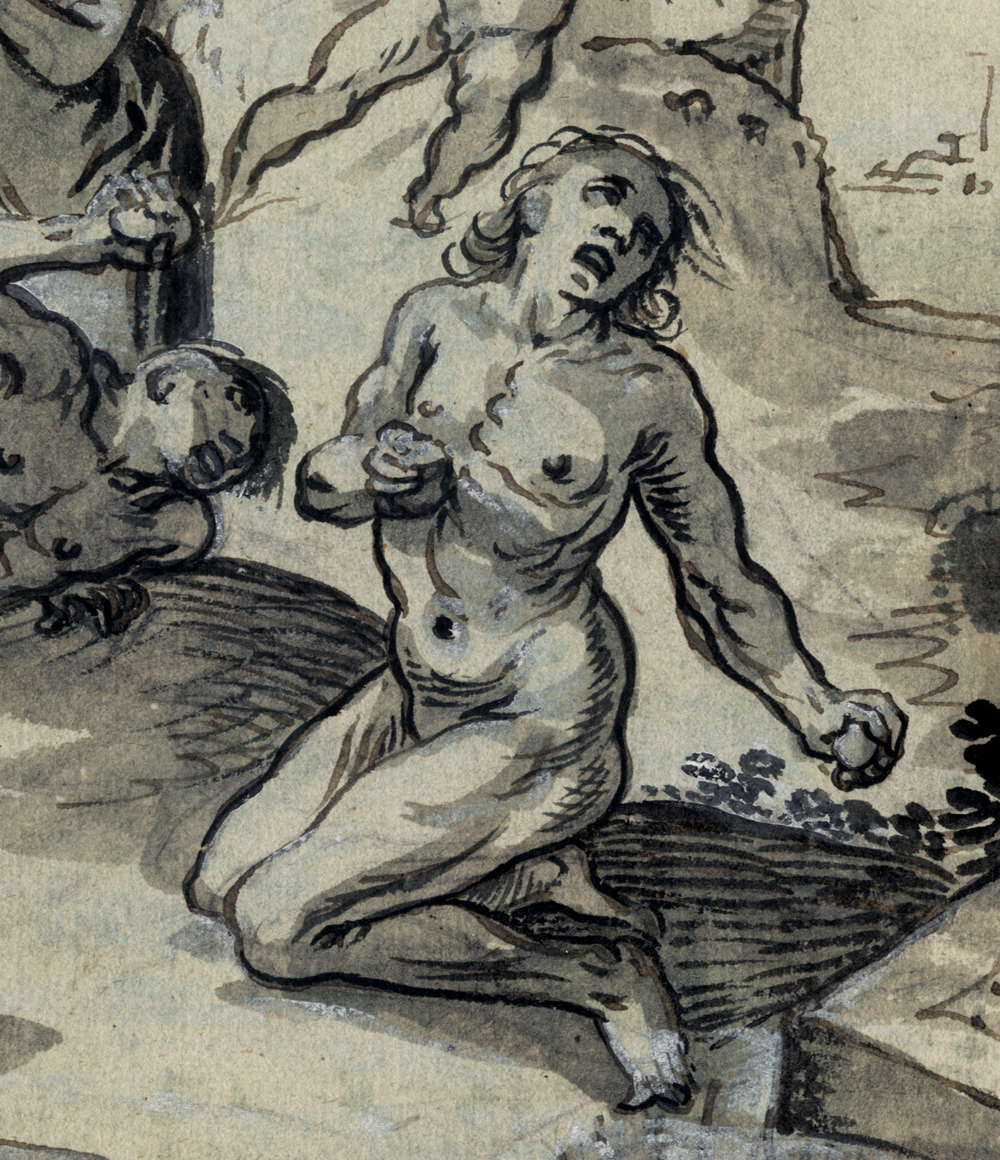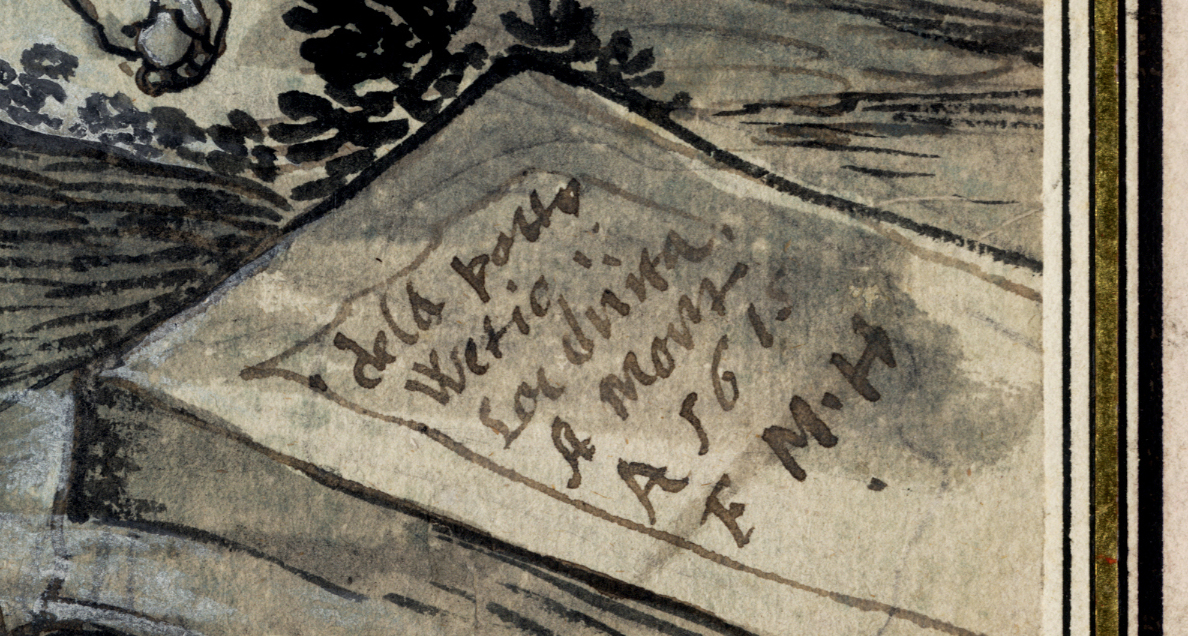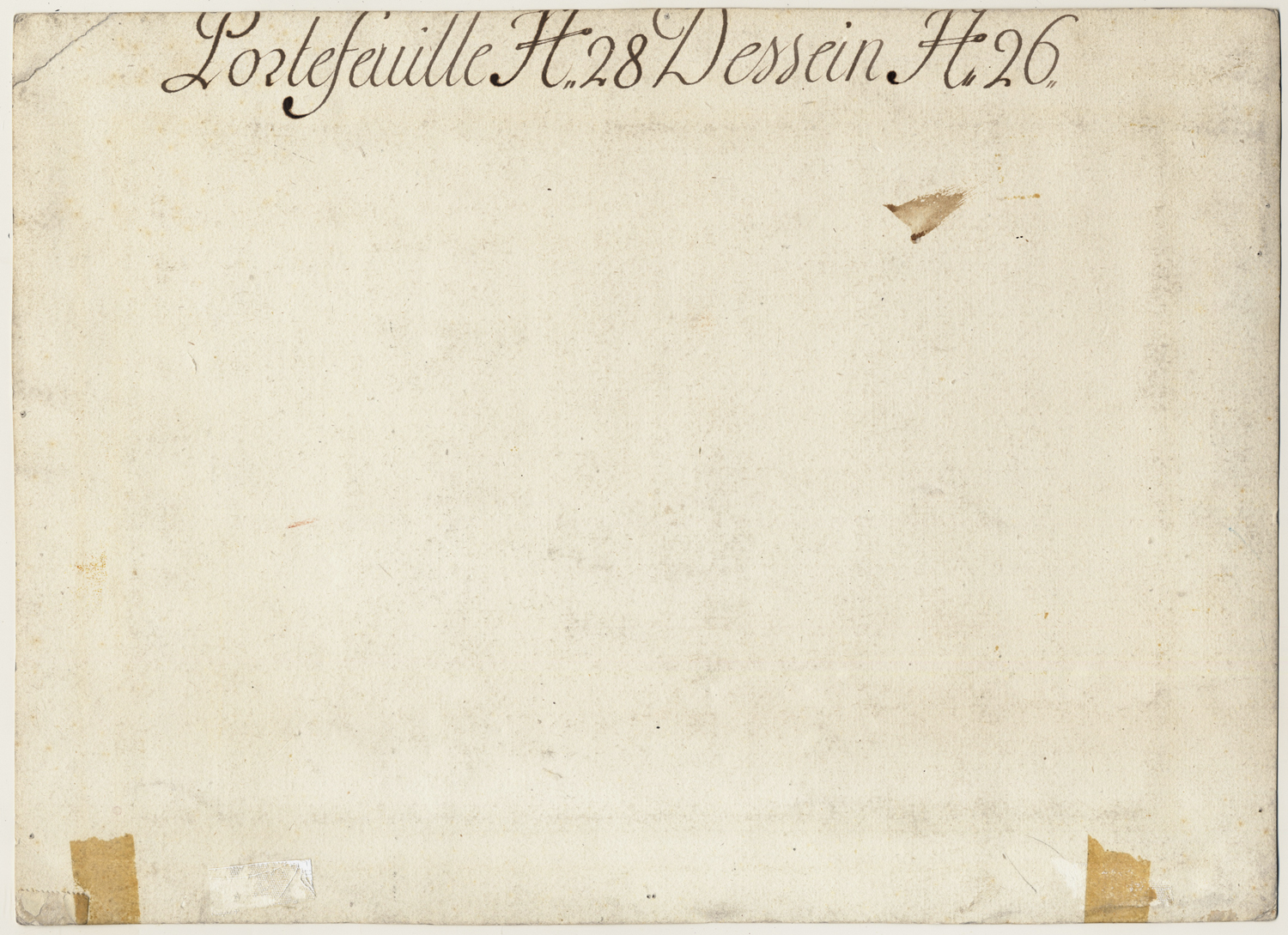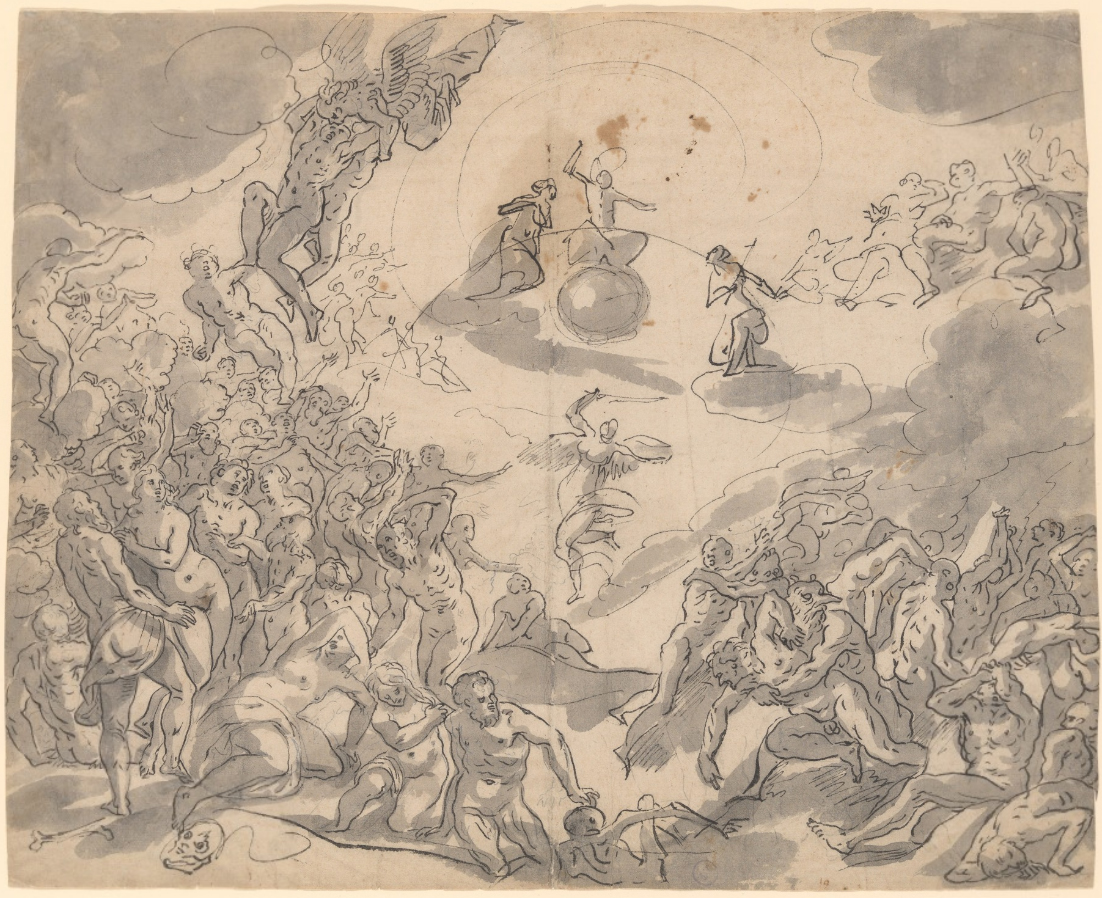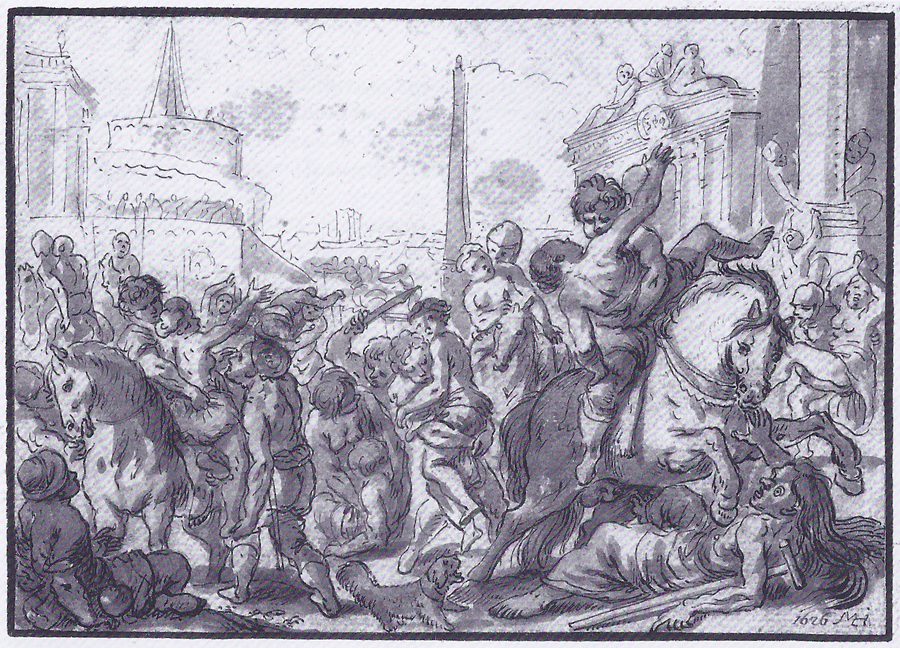MICHAEL HERR (Metzingen 1591 – 1661 Nuremberg)
Michael Herr (Metzingen 1591 – 1661 Nuremberg)
Christ Healing the Paralytic at Bethesda
Pen and black and brown ink, grey and brown wash, heightened in white (partly oxidized) over black chalk, 198 x 301 mm (7.8 x 11.9 inch); laid down on Achille Ryhiner-Delon’s collector’s mount with framing lines in black ink, gold leaf and pink and green wash, 274 x 382 mm (10.8 x 15 inch)
Dated and monogrammed ‘A[nno] 1615 / F[ecit] M.H.’ and inscribed ‘dela porta (?) / Wetic / Loc dvita (?).’ (pen and brown ink, lower right)
The mount numbered ’79.’ (pen and brown ink, upper left) and ‘3.’ (pen and brown ink, upper right)
Provenance
~ Achille Ryhiner-Delon (1731–1788), Basle (Lugt 3004b); on his characteristic decorative mount, with inscription ‘Portefeuille No 28 Dessein No 26’ (verso)
~ Private collection, New York
***
This recently discovered drawing is an interesting addition to the small oeuvre of the Southern German Michael Herr.1 Born in Metzingen, he was most likely trained in Stuttgart between 1605 and 1609, possibly by the court painter Georg Donauer, before moving to Nuremberg in 1610. He travelled to Rome and Venice in 1614-15 and was fascinated by the works of his Italian contemporaries, including the Carracci, Guido Reni, and Jacopo Palma il Giovane. He returned to Nuremberg in 1618 or 1619, becoming a master there in 1622. Herr established himself as one of the city’s leading masters and was elected to represent local artiss in the Larger City Council from 1639 onward. He not only produced historical, religious, and mythological paintings, but also received numerous commissions for epitaphs and portraits. Herr also depicted soldiers in their daily routines – a subject he could study firsthand when the Swedish troups besieged Nuremberg in 1632.
The present drawing can for instance be compared to Herr’s Last Judgment in the Metropolitan Museum, New York (fig.).2 The human musculature is drawn with a rather wide pen, with undulating outlines subtly varying in strength. The way in which the artist has drawn the heads is especially comparable, in particular of figures looking up. The rather pointed feet, particular those of Christ in the present drawing, are also typical. Herr’s Rape of the Sabine Women of 1626 in the Staatsgalerie, Stuttgart, also shows clear parallels to our drawing (fig.).3 Again the figures have been drawn with undulating lines of various width, and the architecture in the background is indicated in a similar shorthand manner. Interestingly, the Stuttgart sheet is also from the collection of Achille Ryhiner-Delon, who kept it in his album No. 53.4
Jesus’s healing of the crippled man beside the pool called Bethesda is one of nine healing miracles involving water and one of seven performed on the Sabbath. Only the apostle John records it (John 5:1-16). The sick and infirm gathered near the pool – Bethesda in Aramaic – believing the water to possess healing properties. The artist has chosen the dramatic moment where Christ orders the crippled man to walk, dramatically rising in the centre of the composition.
SOLD
1. For the artist, see Silke Gatenbröcker, Michael Herr (1591 - 1661). Beiträge zur Kunstgeschichte Nürnbergs im 17. Jahrhundert. Mit Werkverzeichnis, Münster 1996.
2. Pen and black ink, grey wash, over black chalk, 323 x 400 mm; inv. no. 1998.41.3; see Stijn Alsteens and Freyda Spira, Dürer and Beyond: Central European Drawings in the Metropolitan Museum of Art, 1400-1700, exh. cat. New York (The Metropolitan Museum of Art) 2012, cat. no. 81 (entry written by Freyda Spira), repr.
3. Pen and black ink, grey wash, over black chalk, 124 x 179 mm; dated and monogrammed ‘1626 MH’; inv. no. C 1990/4035; see Hans-Martin Kaulbach (ed.), Deutsche Zeichnungen vom Mittelalter bis zum Barock, Bestandskatalog, Stuttgart 2007, cat. no. 263, p. 139, repr.
4. Kaulbach, op. cit., p. 139.
